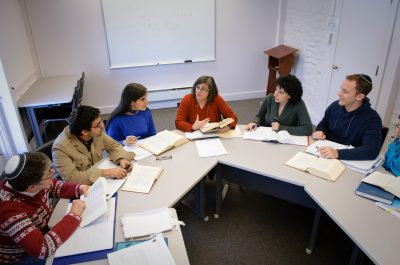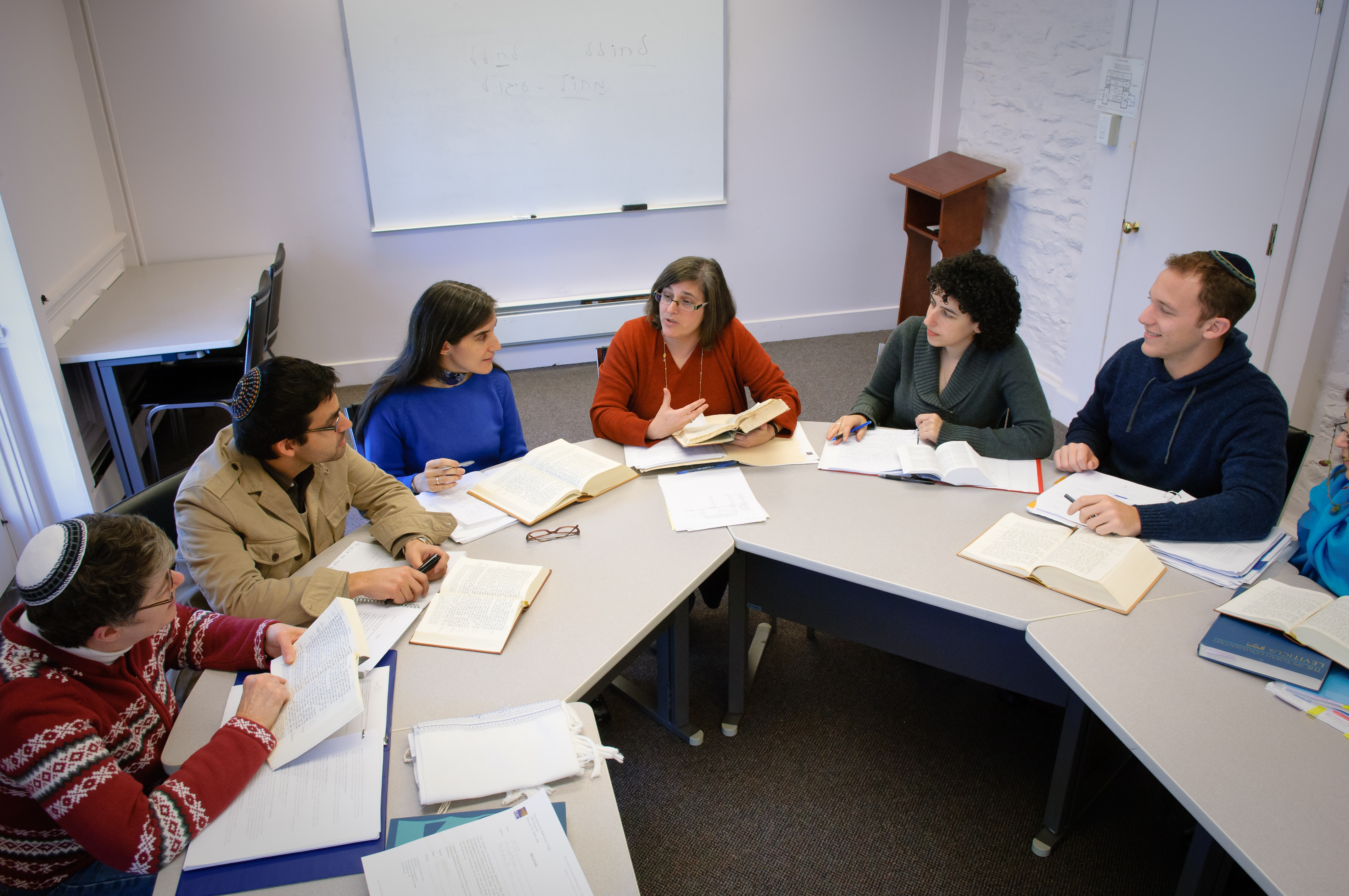
This is the second in a two-part feature on recent changes in the Reconstructionist movement. For the first part, an interview with Rabbi Dan Ehrenkrantz, current president of the Reconstructionist Rabbinical College, follow this link.
The modern rabbi is vastly different from her traditional counterpart. In addition to the responsibilities of scholarship and leading meaningful liturgical worship, contemporary rabbis must also demonstrate fundraising finesse and social grace, the passion of the activist and the restraint of the politician. It’s a balancing act, one that has as much to do with navigating the culture at large as Torah and Talmud.
Liberal Judaism has often revolved around the tentpole of openness. In each of the non-Orthodox movements, the words “inclusive,” “accepting,” and “affirming” have been employed to varying degrees of success. Out of this push for greater openness come the counter-questions: “How much openness is too much? Who else must be included?” Contemporary rabbinic work demands the most interreligious interaction–and even clerical oversight, in the case of interfaith families and non-Jewish affiliate members–of any moment in our history.
“The conversation about inclusivity twenty years ago was about bringing specific population groups in from the margins to some kind of imagined center, into a community,” explained Tamar Kamionkowski, Ph.D., Vice President for Academic Affairs and Academic Dean at the Reconstructionist Rabbinical College in Wyncote, Pennsylvania, during a recent interview with New Voices. “The challenges that we have nowadays with inclusivity are that identities are so fluid, are constantly shifting. We don’t have single identities anymore: in terms of ‘multi-faith,’ in terms of how young Jewish people understand their Judaism.” For Kamionkowski and others at RRC, this shift, while challenging, isn’t inherently problematic. It does, however, suggest a need for preparing seminarians to execute ambidextrous rabbinate careers.
“We’re quite aware that most Jews now do not actually seek out rabbis,” Kamionkowski admits. “They don’t go to a ‘center,’ whether a synagogue, or the Jewish community center. In part, it’s a rejection of movements, of denominations, of organized religion, in favor of spirituality. But I think it’s also a product of–Kaplan said, we live in two civilizations–that we no longer live in two civilizations. Jews are completely interwoven into a much broader, more exciting multi-faith, multi-cultural world.”
In order to better prepare rabbis for this world, Kamionkowski is taking part in significant curriculum changes at the Reconstructionist seminary. With this overhaul comes several key components, not the least of which is creating spaces for rabbinic staff to mentor current and prospective students, as they come to understand joint allegiances. The hope is that graduates will find the complexities of identity a source of strength, while they participate in shaping the face of contemporary Judaism. An intriguing word Kamionkowski uses during our conversation, to describe the seminary model being proposed at RRC, is “laboratories.”
“We want to create experimental laboratories, where students go and find Jews, and say: How can I help? What do you need?” she says. This image is a far cry from the mythic, “old-country” rebbe, whose stateliness and spiritual dignity, it was said, might magnetize a community toward itself, and to him. By contrast, Kamionkowski and the faculty of RRC paint a picture of a serving rabbi, open to change: relevant by meeting the unique needs of a diverse community. The paradigm shift may be a tough sell for some, but there’s optimism and confidence at RRC.
“One of our faculty members last year said he thought that, in the coming years, corporations may be seeking out clergy, as they have to make more decisions about the environmental impact of their work, that the ethical decisions won’t be just business-based,” Kamionkowski shares. “I thought that was fascinating.” The new curriculum at RRC will emphasize practical application and community service as rabbinic expression–in addition to study of Torah, Talmud, and Hebrew language.
“We are developing service-learning components into rabbinical school,” she explains. “We are developing courses in which students spend some time in class, but a lot more time going out into the streets– just going out, and experimenting, and frankly: coming up with ideas.” These ideas, Kamionkowski hopes, will be of a new sort, reflective of the current needs of contemporary Jews. “I think that we want to create an environment which enables students to say, ‘I’ve got an idea, I want to go try it out.’ The faculty will be here to support, to give feedback, to help give training, but to really empower students to have a better sense of what’s around the corner.”
Ideally, this also avoids another problem: that of the religious bubble often experienced by clergy who spend so many years in houses of higher learning and worship, only to find a disconnect between the religious life, and the lived experience of congregants. At the same time, there must be a balancing act between the need for experimentation and change, and the importance of classical learning. “The issue is really a pragmatic one,” Kamionkowski elaborates. “We’ve got x-number-of-years for clergy education, and there is a body of knowledge that’s necessary. There are skill sets that are absolutely necessary to do the job. So it really comes down to: How much time is available? Are there ways in which we can integrate acquisition of knowledge and acquisition of skills, by getting folks out into the community?”
For the Reconstructionist community, these changes will be noticeable in Fall of 2013, as new components to the curriculum are implemented. The curriculum is a work in progress, developed through collaboration with the current faculty, as well as students, who want to see the project thrive. Historically, moments in Reconstructionist Judaism–the embrace of LGBTQ Jews in the early 80s and the affirmation of patrilineal Jews in the 60s, for instance–have often been portents of coming trends in the wider Jewish community. Could this renewed emphasis in hands-on rabbinic training be a sign of the days to come? Too early to tell, but among the faculty and students at RRC, there is much hope.
The author of this piece is a prospective student at the Reconstructionist Rabbinical College for the Fall 2013 semester.

